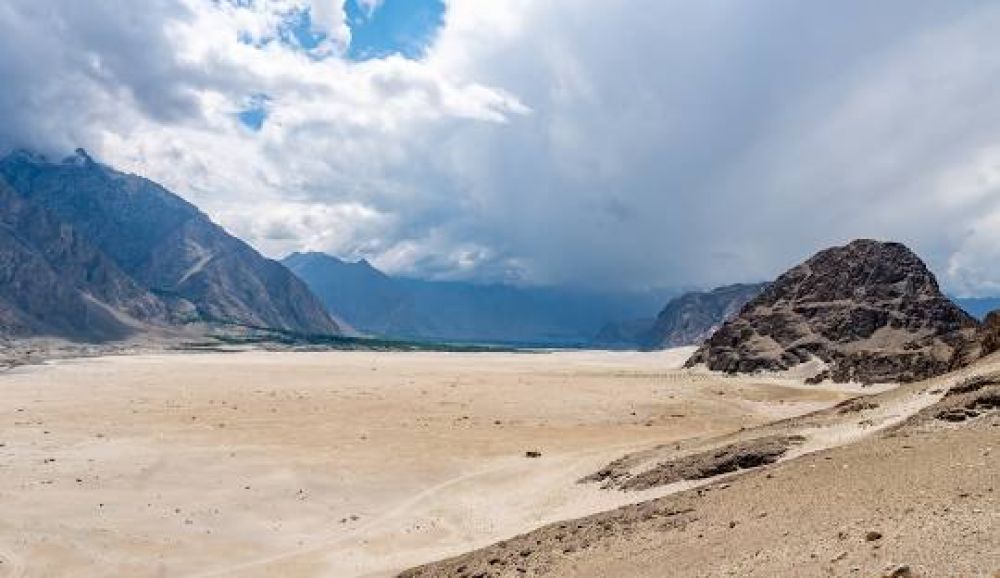

The Katpana Desert, often referred to as the 'Cold Desert', is a high-altitude desert located in Skardu, Pakistan. This awe-inspiring landscape is remarkable due to its sand dunes that are surrounded by snow-capped peaks. It lies at an elevation of 2,226 meters (7,303 feet) above sea level, making it one of the most unique deserts in the world.
The history of tourism in the Skardu region dates back to the time when it was considered a gateway to the great mountain ranges of the Karakoram and Himalayas, including the famous K2. However, the Katpana Desert itself was not immediately recognized as a tourist destination. It was only when adventurers and trekkers traversing the rugged terrain of Skardu began sharing their experiences of this beautiful oddity that tourism interest began to take root.
Initially visited by intrepid explorers and researchers, the area gained popularity through word-of-mouth, and eventually, vivid photographs and travel accounts published in magazines and on travel blogs. This growing awareness brought a gradual influx of tourists, fascinated by the contrast between the desert landscape and the surrounding snow-covered mountains.
The local administration, recognizing the potential of this natural wonder, gradually began to develop infrastructure to cater to tourists' needs. Comfortable lodging, improved road accessibility, and guided tours have been established over time to enhance the visitor experience. Traditional and cultural events have been organized to celebrate the rich heritage of the Skardu valley, further enticing tourists to explore the region.
Eco-friendly Practices: In recent years, there has been a significant shift towards sustainable tourism. Operators now emphasize preserving the desert's natural state, advocating for minimal environmental footprint from visitors. Eco-friendly accommodations using solar energy are gaining popularity.
Adventure Tourism: The Katpana Desert has emerged as a hotspot for adventure tourism. Activities such as desert safari on 4x4 vehicles, camel rides over the dunes, and even cold desert trekking appeal to those seeking an adrenaline rush. Star gazing has also become incredibly popular, thanks to the desert's clear skies and minimal light pollution.
Cultural Exploration: Skardu's cultural richness is now a central part of tourism in the Katpana Desert. Visitors often take back memories of the local music, dance, and crafts. Homestays and cultural exhibits allow for a deeper connection with the local Balti culture.
While tourism is a growing industry in the region, challenges such as environmental sustainability and cultural preservation remain paramount. Stewardship and responsible tourism practices are essential to ensure that the Katpana Desert continues to be a source of wonder for future generations.
Looking forward, the Skardu and Katpana Desert region holds immense potential for growth in tourism. Proper management, investment in infrastructure, and global marketing could further establish it as an exemplary model of sustainable and responsible tourism on the world stage.